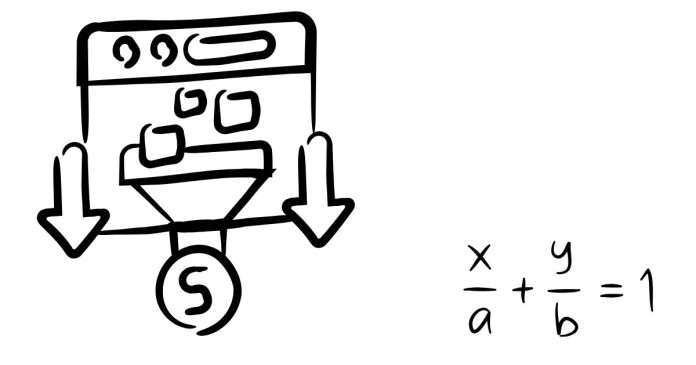In mathematics, especially in fields such as linear algebra, logic, and computer science, canonical forms are standard or simplified representations of objects that preserve key properties. Here’s a breakdown of canonical forms in various contexts and how conversion between them typically works:
1. Canonical Forms in Linear Algebra
In linear algebra, canonical forms are used to simplify the structure of matrices, vectors, or linear operators, making them easier to work with. Common canonical forms include:
- Row Echelon Form (REF): A matrix is in row echelon form if it has the following properties:
- The leading entry (first non-zero number from the left) of each non-zero row is 1.
- The leading 1 in each row is to the right of the leading 1 in the row above.
- All rows consisting entirely of zeros are at the bottom.
Conversion: To convert a matrix to row echelon form, you can perform row operations (swap, scale, or add multiples of one row to another).
- Reduced Row Echelon Form (RREF): A matrix is in reduced row echelon form if:
- It satisfies all the conditions of row echelon form.
- The leading 1 in each row is the only non-zero entry in its column.
Conversion: To convert a matrix to RREF, you apply additional row operations to make sure each leading 1 is the only non-zero entry in its column.
- Jordan Canonical Form: For a square matrix AA, its Jordan canonical form is a block diagonal matrix where each block is a Jordan block. A Jordan block is a square matrix with the eigenvalue on the diagonal and ones on the superdiagonal.
Conversion: To convert to Jordan form, you first need to compute the eigenvalues and eigenvectors, and then determine the generalized eigenvectors. This process can be complex and may not always be possible over the reals (especially for non-diagonalizable matrices).
- Diagonal Form: A matrix is diagonalizable if it can be written as A=PDP−1A = PDP^{-1}, where DD is a diagonal matrix and PP is an invertible matrix. Diagonalization only works for matrices that have a complete set of linearly independent eigenvectors.
Conversion: To diagonalize a matrix, you find its eigenvalues and eigenvectors, construct the matrix PP of eigenvectors, and then compute P−1P^{-1} to obtain D=P−1APD = P^{-1} A P.
2. Canonical Forms in Boolean Algebra
In Boolean logic, canonical forms are standard ways of representing Boolean expressions, typically either as a sum of products (SOP) or product of sums (POS).
- Sum of Products (SOP): A Boolean expression is in canonical SOP form if it is expressed as an OR of ANDs. Each product term should include all variables, either in direct or complemented form.
Conversion: To convert a Boolean function to SOP:
- Write down the truth table for the function.
- Identify the rows where the function outputs 1.
- For each such row, write a product term corresponding to the variables’ values in that row (using negation for 0s).
- The canonical SOP form is the sum of all these product terms.
- Product of Sums (POS): A Boolean expression is in canonical POS form if it is expressed as an AND of ORs. Each sum term should include all variables, either in direct or complemented form.
Conversion: To convert to POS:
- Write down the truth table for the function.
- Identify the rows where the function outputs 0.
- For each such row, write a sum term corresponding to the variables’ values (using negation for 1s).
- The canonical POS form is the product of all these sum terms.
3. Canonical Forms in Set Theory and Relations
In set theory and relational algebra, canonical forms help to simplify and standardize sets or relations.
- Set Notation: A set is often written in a canonical form where elements are listed in a specific order (e.g., sorted). For example, the set {1,3,2}\{1, 3, 2\} might be written in canonical form as {1,2,3}\{1, 2, 3\}.
- Relations: A relation can be represented as a set of ordered pairs. The canonical form of a relation could involve simplifying the relation by removing duplicates or ordering the pairs in a standard way.
4. Canonical Forms in Automata Theory
In automata theory, canonical forms are used to simplify the representation of finite state machines (FSMs) or regular expressions.
- Minimized DFA (Deterministic Finite Automaton): A minimized DFA is the smallest possible DFA that accepts the same language. The process of minimization involves merging equivalent states.
Conversion: To convert a DFA to its minimized form:
- Construct the equivalence relation for the states (states that behave identically for all inputs).
- Merge equivalent states and build a new DFA with fewer states.
5. Canonical Forms in Polynomials
A polynomial can also be expressed in a canonical form, typically as a sum of terms in decreasing order of degree.
- Standard Form: A polynomial is typically written in the form:
P(x)=anxn+an−1xn−1+⋯+a1x+a0P(x) = a_n x^n + a_{n-1} x^{n-1} + \dots + a_1 x + a_0Conversion: To convert a polynomial to standard form, you collect like terms and arrange them in decreasing powers of xx.
6. Canonical Forms in Other Areas
There are many other canonical forms in different areas of mathematics and computer science, such as:
- Canonical Forms in Graph Theory: The canonical form of a graph may refer to an isomorphism-invariant representation, such as an adjacency matrix or adjacency list.
- Canonical Forms in Lie Groups: For Lie groups, the canonical form refers to a specific way of representing group elements, such as in matrix representations.
In general, conversion between canonical forms typically involves applying specific rules or operations that preserve the underlying properties but simplify the structure of the object in question, making it easier to analyze, compare, or manipulate. The process varies depending on the specific field and context in which canonical forms are used.


